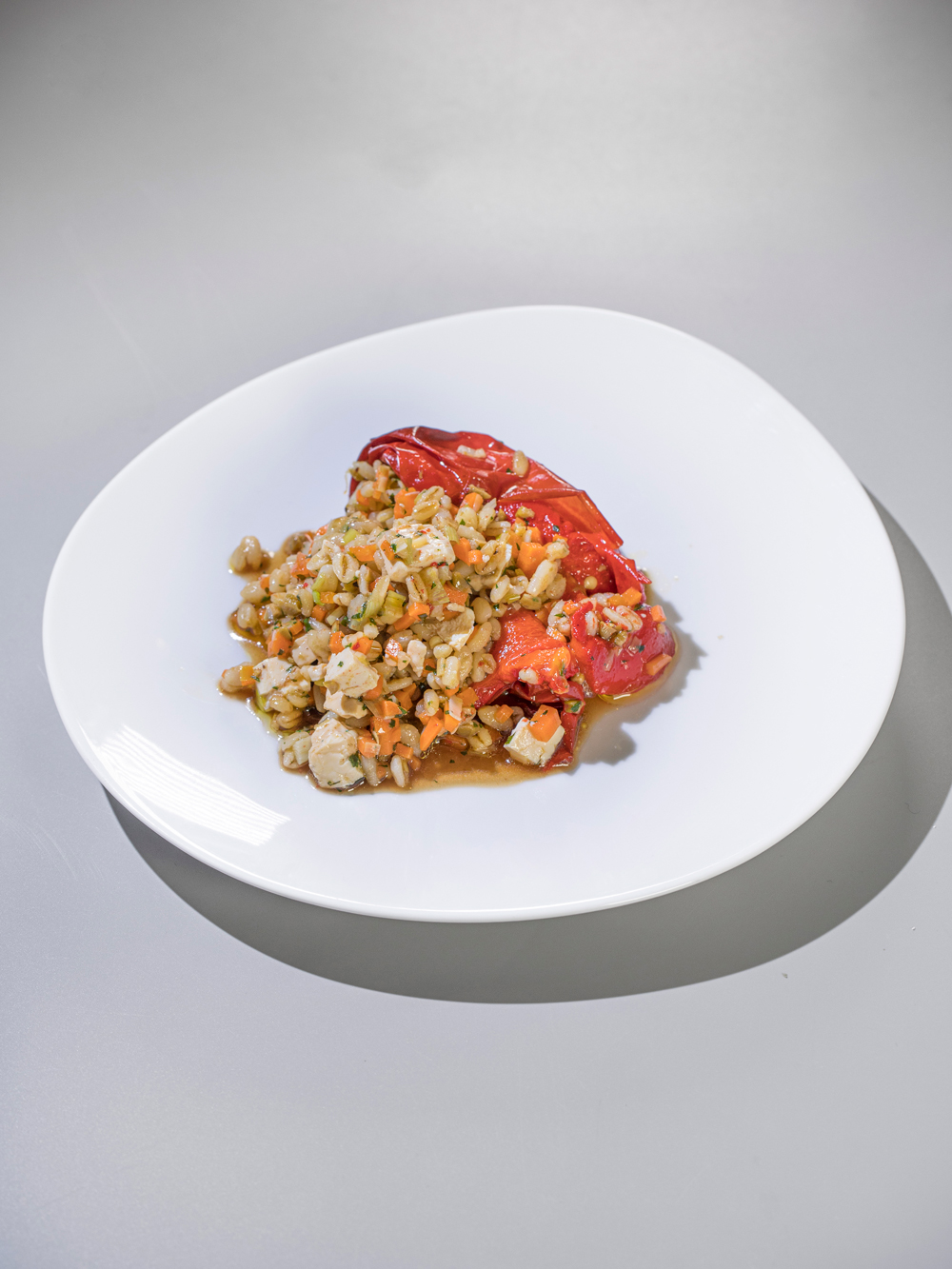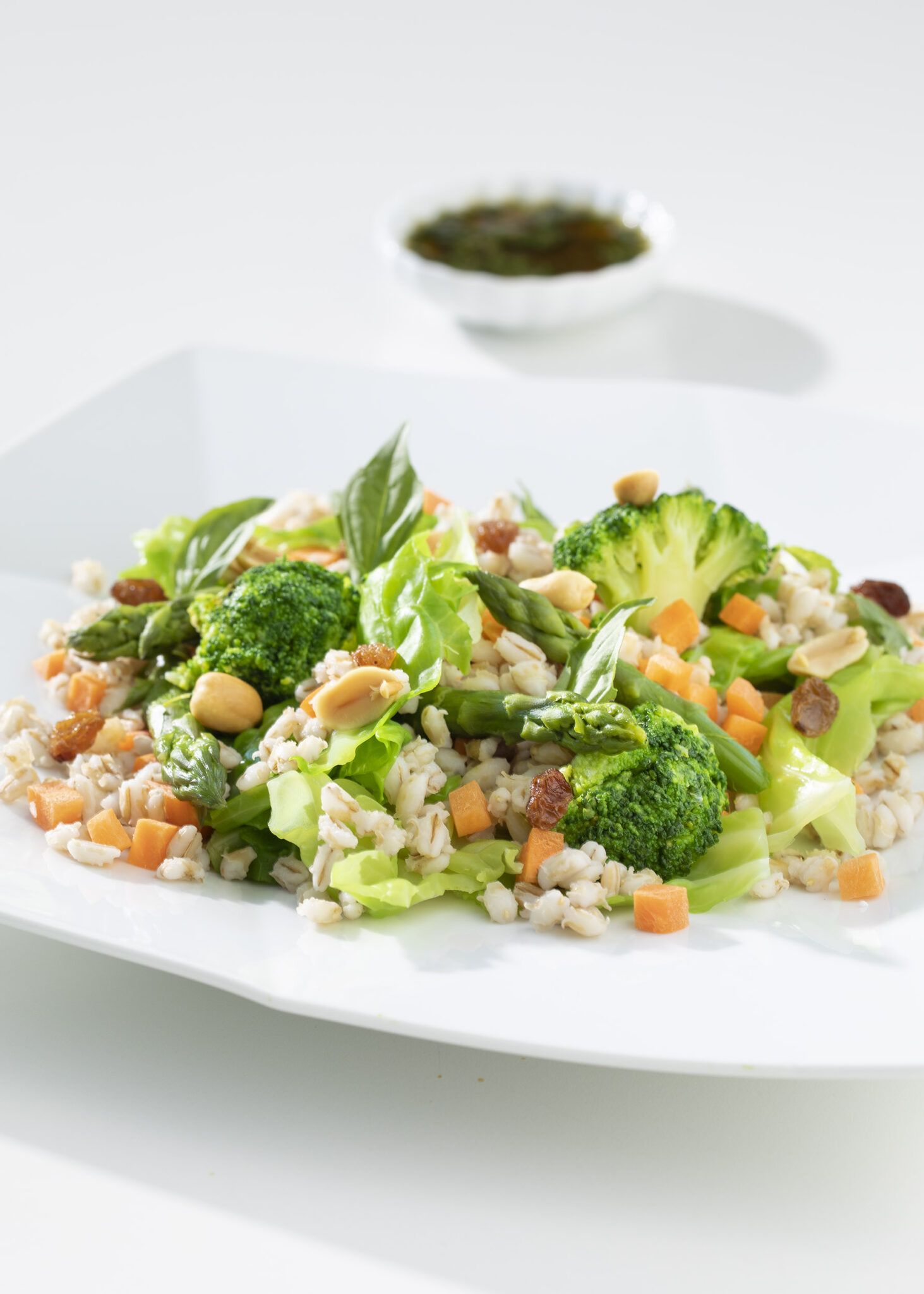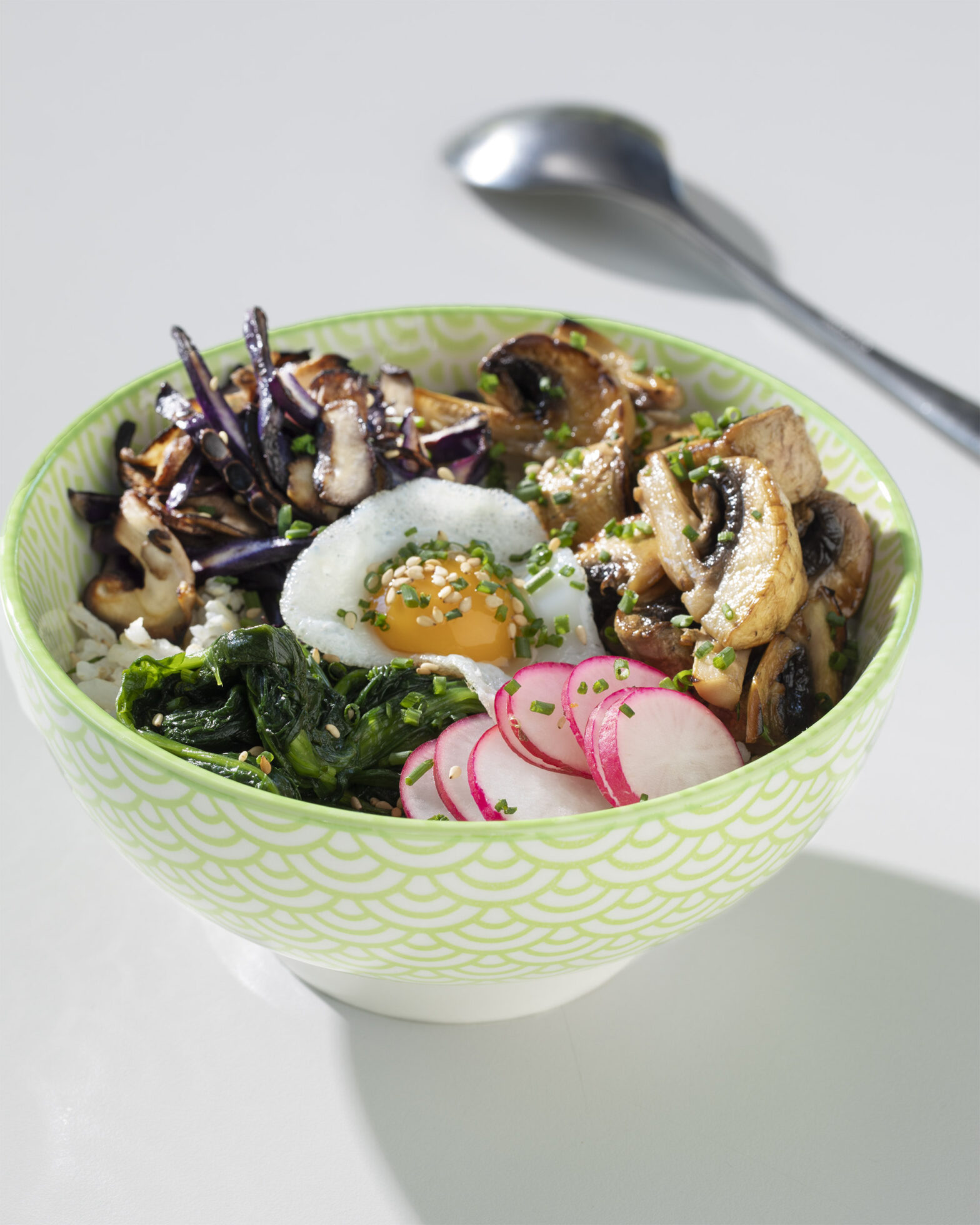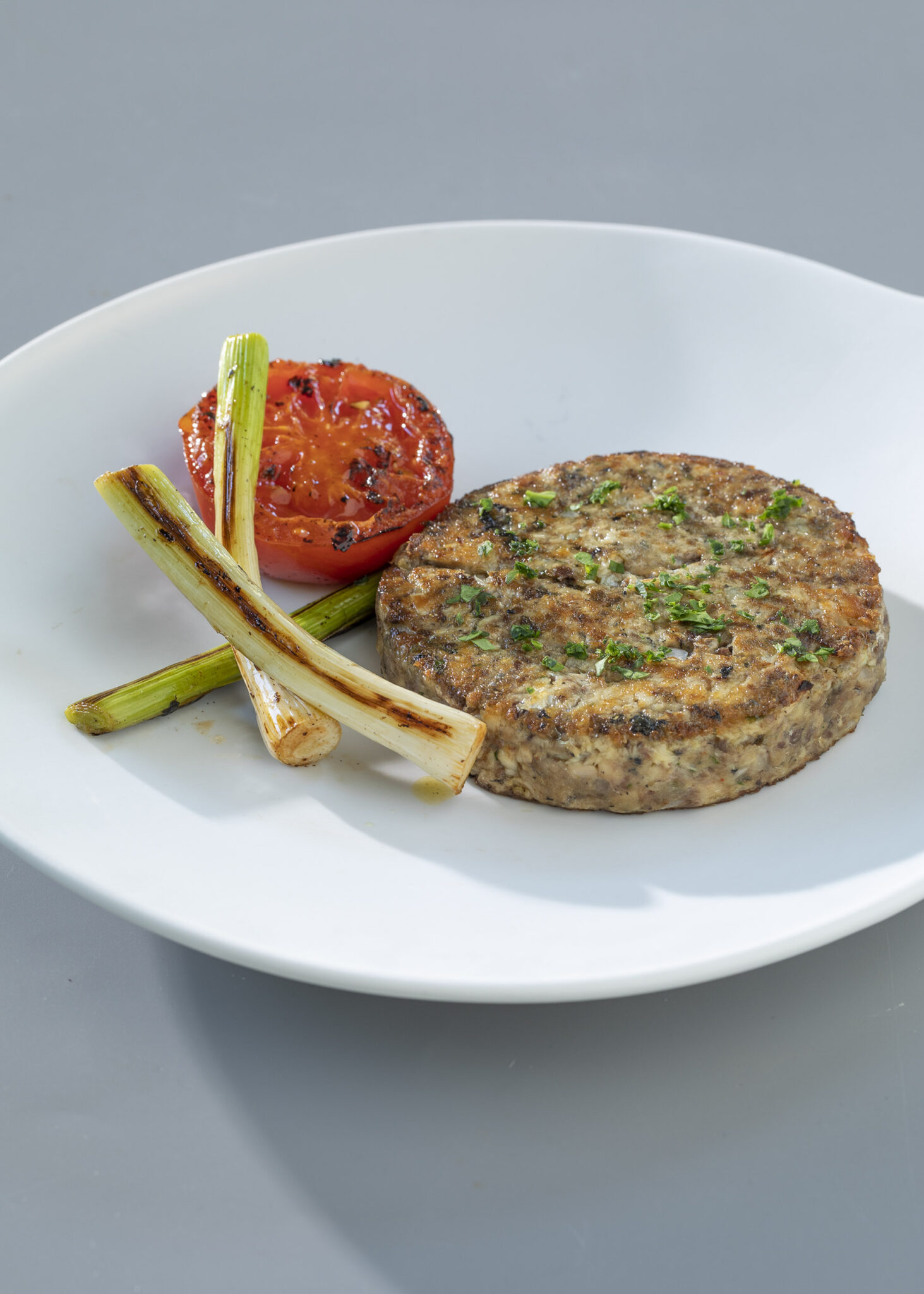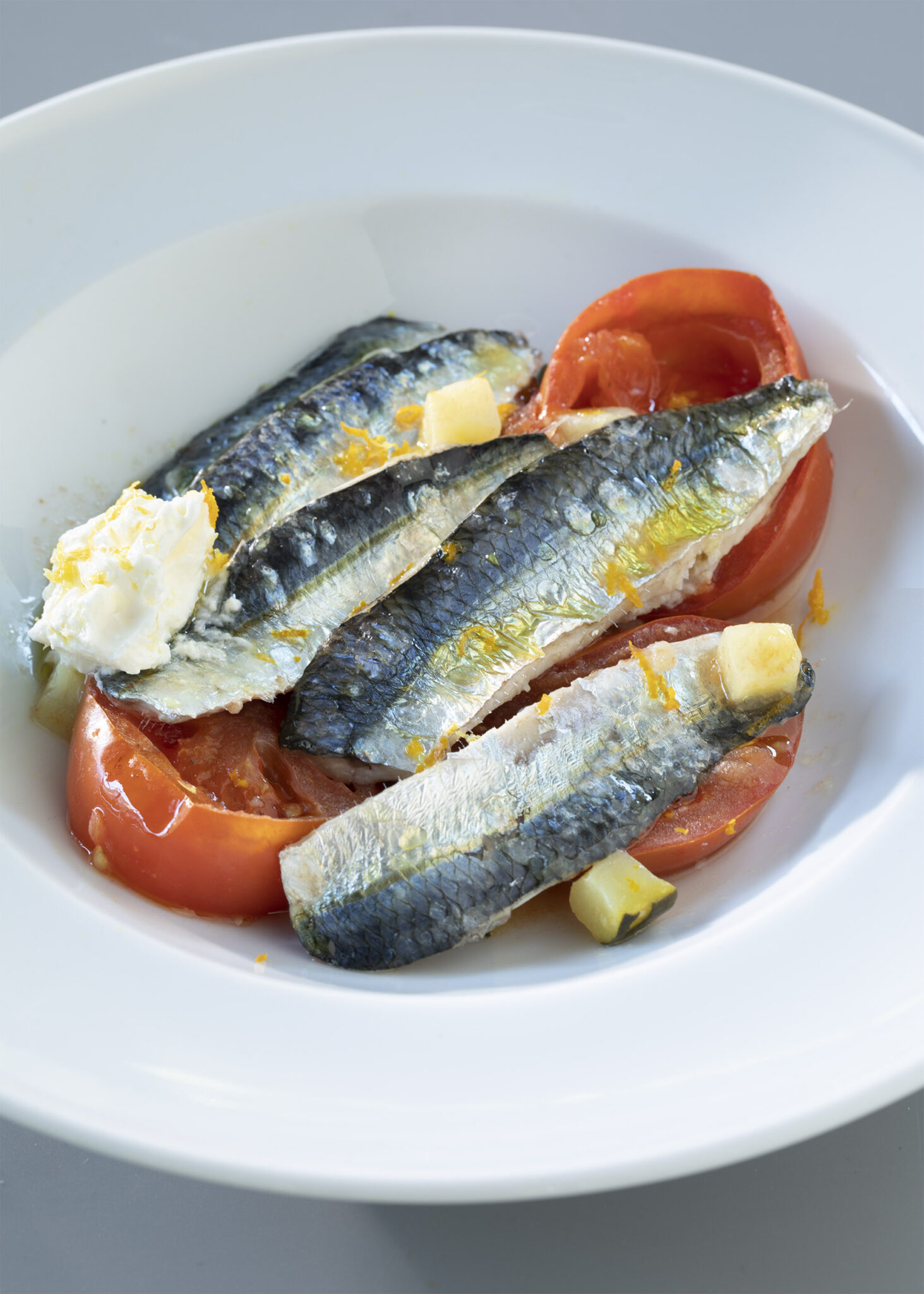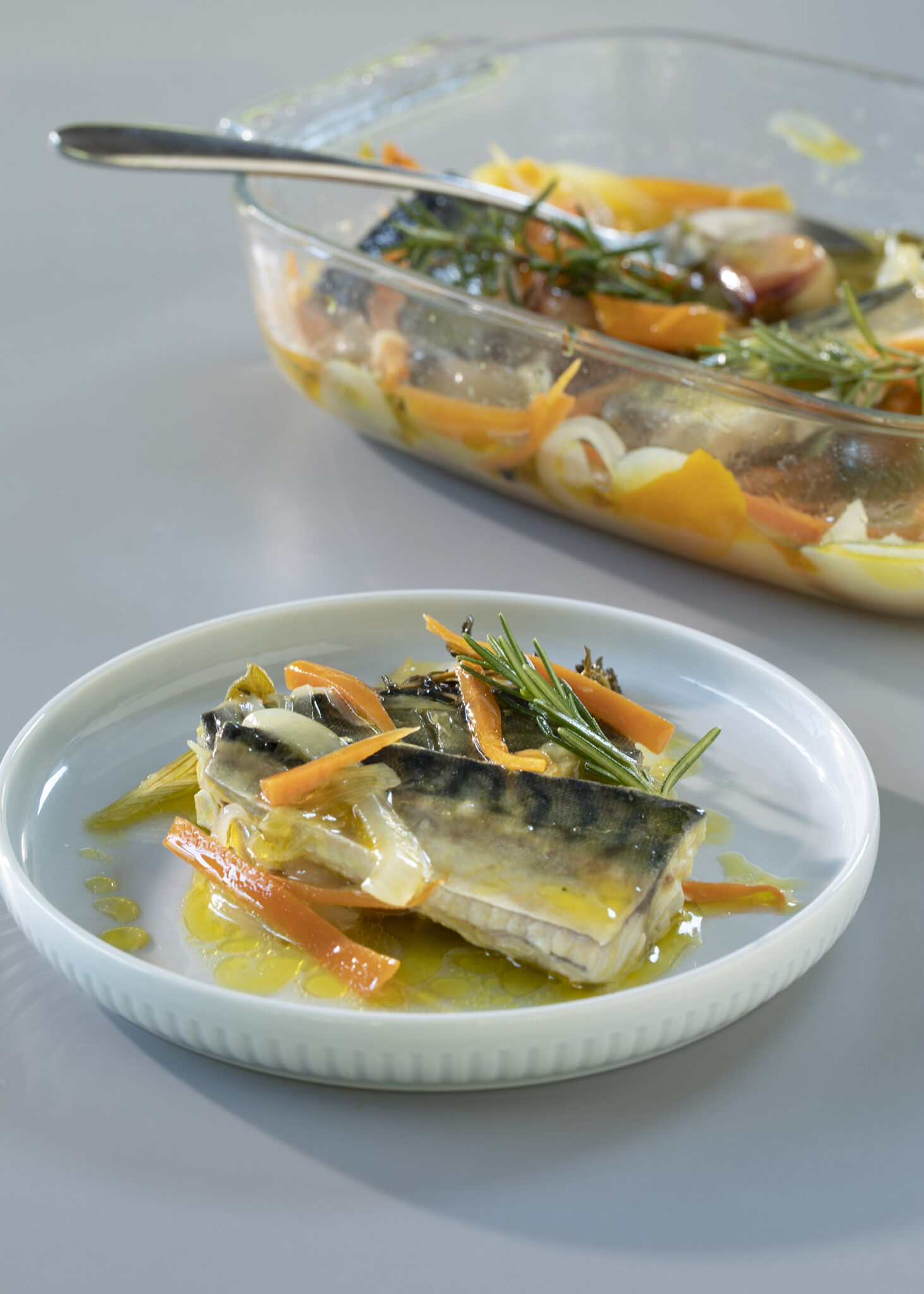Hyperglycaemia (high blood sugar) refers to the increase in glucose in the blood and may occur as a direct side effect of hormone therapy affecting the sensitivity of insulin, the hormone responsible for introducing sugar into the cells. When this sensitivity is reduced, the cells are unable to assimilate the sugar, and it accumulates in the blood. If this situation persists, it can lead to type 2 diabetes. Hyperglycaemia can be treated and prevented with healthy eating habits and regular physical activity, and by following similar recommendations for a healthy diet as the general population. Nevertheless, it is necessary to know the composition of foods, especially those that are a source of carbohydrates – and therefore sugar – the nutrient with the most direct effect on blood glucose levels.
WHAT DO WE RECOMMEND?
Based on fresh and minimally processed foods, prioritising plant-based foods and limiting foods of animal origin and those which are high in saturated fats, sugars, and alcohol.
In green, are the food products which can be consumed more freely as their impact on glucose is very low. Those in yellow are those that should be consumed in the quantity and frequency indicated by the specialist. The rest (orange and red) should be consumed in a controlled manner.

Follow a food pattern based on the plate method for both lunches and dinners to keep track of the amount of carbohydrates consumed. Divide your plate in half: one half should always be plant-based, and the other half should contain one quarter of starchy foods and the other quarter protein-rich foods. Following this method, prepare single dishes, combined dishes, first and second course meals, or a combination of small dishes (tapas).
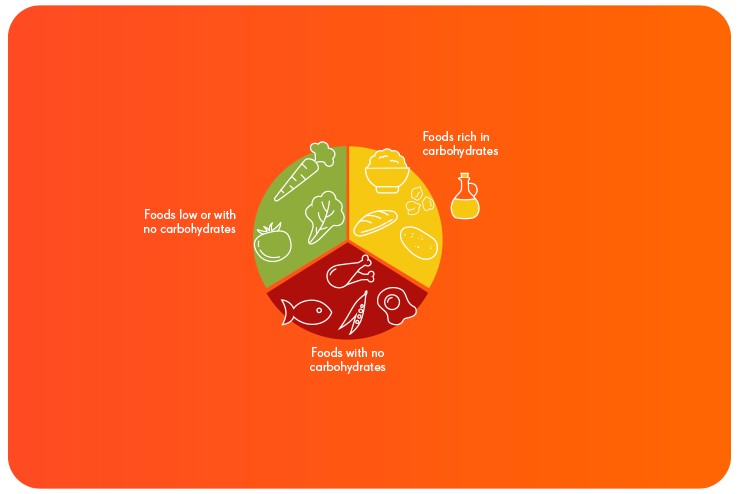
Fibre helps to slow down glucose absorption.
- Prioritise wholegrain cereals (brown rice, wholemeal pasta, oats, millet, brown bread, etc.) and pulses, reducing or eliminating refined cereals (white rice, white bread).
- Eat two to three portions of fruit and vegetables, prioritising whole fruit with its peel and avoiding consumption in the form of juices.
Include blue fish at least twice a week.
A handful of nuts (hazelnuts, almonds, walnuts) is a good choice as a snack, as they have almost no effect on blood glucose levels.
Although the recommendation is to prioritise fresh and minimally processed foods, if processed foods are eaten, it is important to be aware of the amount of sugar they contain through nutrition labelling.
The recommended amount of carbohydrates varies depending on factors such as age, weight, height, medication, level of physical activity, etc. Therefore, the specialist or registered dietitian should specify the amount and daily distribution of carbohydrates in the diet.
Hyperglycaemia is a symptom that often occurs together with hypertension and hyperlipidaemia. This phenomenon is called metabolic syndrome, and different aspects should be considered at the same time to ensure adequate nutrition.
The foods and recipes high in carbohydrates are marked in italics, and their quantity should be controlled and adapted according to each patient.
|
